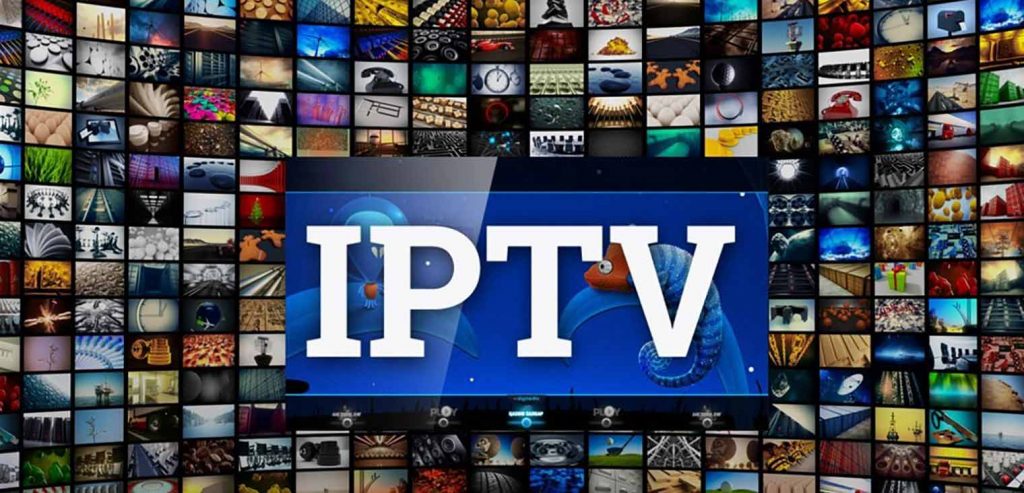About IPTV you have to know
If you’re not a part of the media landscape, there’s a good chance you haven’t heard of IPTV. But you’ve probably been using it for years. And it’s likely that you’re going to be using it more in the future. IPTV is growing quickly, with new providers and services popping up alongside traditional TV providers with more IPTV offerings. But what is IPTV? What does IPTV stand for? How does it work? And how can you use it to improve your TV-watching experience?

What Is IPTV?
Let’s start with the basics. What, exactly, is IPTV?
IPTV stands for “internet protocol television.” The “IP” in IPTV is the same as the one in your IP address or VoIP (voice over IP). All that means is television programming is being communicated using the internet protocol.
To understand what that means, you need to know a bit about how non-IPTV works. With cable or satellite TV, broadcasters send out signals and viewers receive them—you’re only able to watch what’s being broadcasted. Unless you have some sort of recording device, you don’t get to dictate what’s on when. You just tune in when you can and watch what’s available.
IPTV is different. Instead of transmitting content via light pulses in fiber-optic cable or radio waves from a satellite, IPTV sends shows and movies through your standard internet connection. (You may be using a cable or satellite internet connection, but these are independent of the ones that usually carry your TV signals.)
Instead of broadcasting a range of shows on a specific schedule, most IPTV uses video on demand (VOD) or time-shifted media—we’ll discuss these, and a third format, in just a moment.
There’s some complicated network architecture behind all of this making it work, including lots of transcoding from traditional signals to IP-friendly ones. But the important thing is that you don’t have to watch what’s being broadcast. You can tell your provider what you want to watch, and they’ll send it to you immediately.
If you’ve used a streaming service like Netflix or Hulu, it’s the same idea, but with TV instead of movies or syndicated shows.
Do You Need a Set-Top Box for IPTV?
Because most TVs aren’t equipped for IPTV, you may need a set-top box that “translates” what you receive over your internet connection into a format that your TV can read.
Your computer, on the other hand, doesn’t need anything to watch IPTV. Once you sign up for a service, you can use it to stream whatever you want in any of the IPTV formats (which we’ll discuss next).
So if you can mirror your screen to your TV, you can watch IPTV without a set-top box.
What is Feature of IPTV
Live Channels
Like broadcast TV, you can also watch shows live on IPTV. Many people watch sporting events this way; it’s easy to stream a game on your phone while you’re on the go.
Other than being broadcast over the internet instead of through traditional TV media, live IPTV is pretty much the same as regular TV.
FOX Sports Go, CBS Sports HQ, Hulu Live TV, and Sling TV all offer live IPTV.
Video on Demand (VOD)
VOD streaming is exactly what it sounds like; you get video whenever you demand it. Movie-streaming sites are VOD providers. There’s no time limit on what you can watch (other than what the service currently has the rights for).
You tell the service what you want to watch, they send it to you via the internet, and you watch it. Simple.
Time-shifted media also call “reply” or “catch up”
If you’ve watched “catch-up TV,” you’re familiar with this type of IPTV. Many broadcast networks now allow users to watch shows that they missed when they have the time to do it.
The important difference between time-shifted media and VOD is that the content being shared has a limited shelf life. You can’t go back and watch an episode of a show that you missed several years ago (well, you could, but it would be VOD then).
One of the most popular services that offers time-shifted media is BBC’s iPlayer.
Catch-up TV is becoming more popular. Downloading apps for providers like FOX, CBS, and NBC let viewers see the shows that they missed without the effort it takes to set up and record something via a set-top box
Starting Your Own IPTV Service
If you’re interested in starting your own IPTV service, your best bet is to hook up with one of these providers. They have the bandwidth, server capacity, and distribution channels that you need.
All you need to do is sign up, choose a plan, and start uploading your content. What sort of content? Who will watch it? How will you make money? All of those things are up to you.
There are IPTV channels for learning magic tricks, getting fit, learning to dance, watching movies, and pretty much anything else you can think of. If you have something you want to share with the world, you can use IPTV to do it.
Of course, you’ll still need to record all of that content. Which takes a lot of work. But once you’ve done that, these services will let you promote and distribute your TV shows, videos, or movies with ease.





There Are 6 Comments
LMPOK
22 Oct, 2021
IPTV
Sunny Huang
22 Oct, 2021
hello, which channels do you like?
Astrit Bruka
23 Nov, 2021
WhatsApp iptv
Lisa Lisa
24 Nov, 2021
+8615012917737
you could add my whatapp
and i will send you one test
Michel
01 May, 2022
Hi can I test the channels please
Sunny Huang
05 May, 2022
yes, already sent, pls check emial.